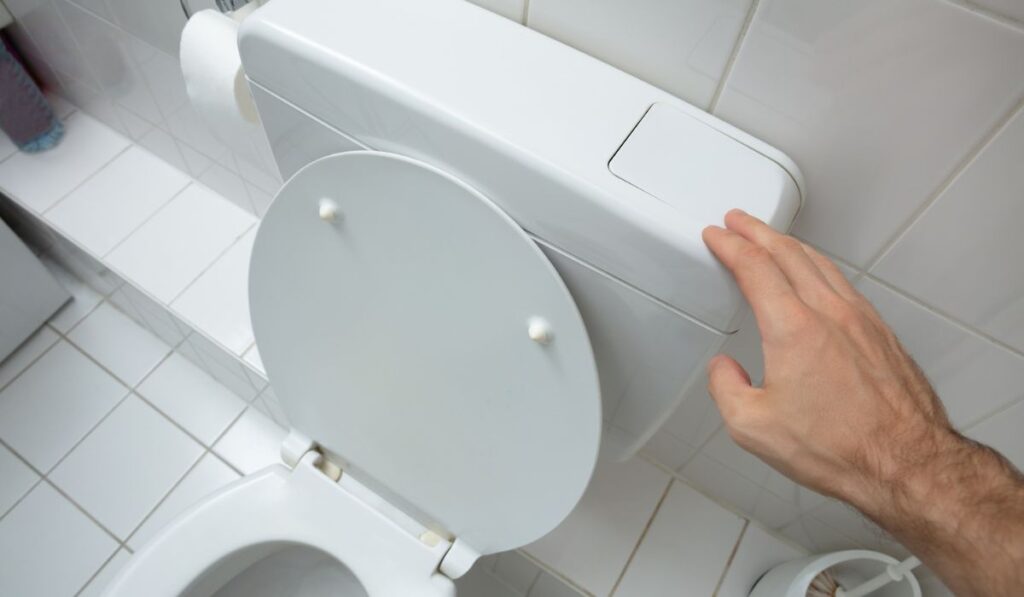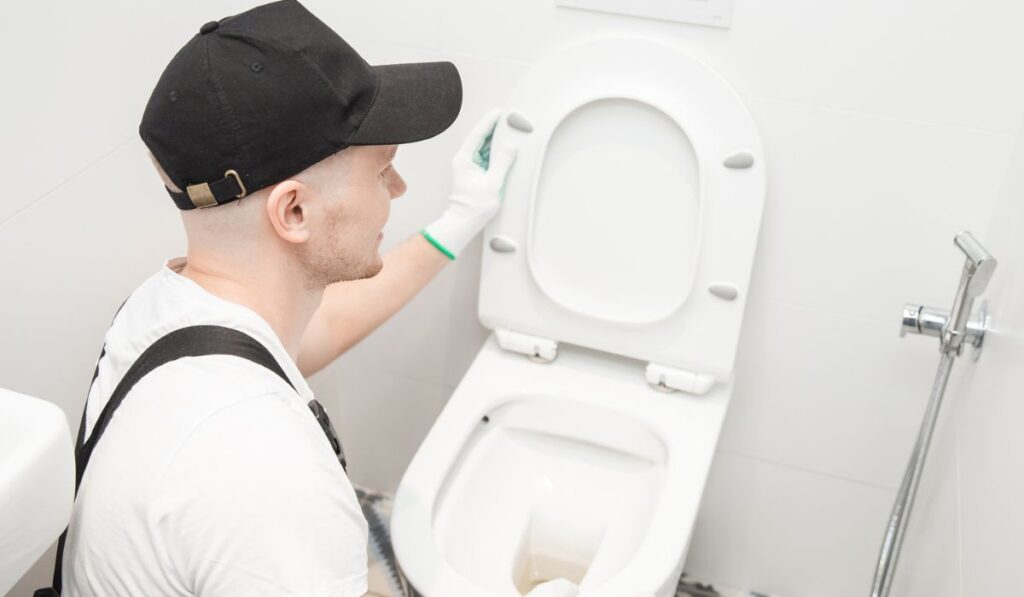We’ve all been there: the water is shut off, and we’re struggling to find a way to get rid of waste. It’s the worst feeling, especially now that we’re in an age when we’re reliant on technology and plumbing for our day-to-day life. Fortunately, there are ways to flush the toilet when the water isn’t running.
You can flush a toilet when the water is shut off by manually filling up the tank with water sourced elsewhere. You can also dump water directly in the bowl, but make sure you add the water all at once and use the same amount that would normally be in the tank.
Let’s take a closer look at how to flush the toilet when the water is shut off, as well as how a toilet actually works.
How a Toilet Works

Most people have a gravity-based toilet, which flushes when water is deposited into the bowl with high force. The water then goes through the pipes, into the sewer line, and disappears, so you no longer have to worry about it.
Nowadays, some people have electronic toilets, which use electric pumps to flush the water rather than gravity. They still need water to function, but it’s less than a gravity-based toilet might need.
Can You Flush the Toilet Without Water?
If the water has been shut off, you can still flush your gravity-flush toilet — though you will need to find water from another source. Go outside to find water from a lake or pond if you have standing water nearby, or use bottled water if you have it to spare.
How to Flush a Toilet Without Water
Before doing anything, make sure the water to the toilet is entirely shut off.
The first thing you need to do is open up the tank in your toilet. If you feel around the porcelain inside, you should feel a ridged line. This is what’s known as the fill line, and this is how much water your toilet needs to be able to flush.
Collect water from another source and pour it into the tank. Only fill it up to the fill line and no more. If you can’t find the fill line, fill it two inches before the overflow valve, and that should serve the same purpose.
You should now be able to flush the toilet with the water inside the tank. You can also pour the water directly into the bowl to trigger a flush. However, when you do this, it’s important to pour it all in at once. If you trickle the water in, there won’t be enough power to flush the toilet.
When you’re pouring the water directly into the toilet, you also need to make sure that it’s the same amount as would’ve gone in the tank. Measure how much water the tank requires to hit the fill line and pour that same amount directly into the toilet in the future.
How to Prepare for a Water Shut-Off Ahead of Time
When you know that the water is going to be shut off due to maintenance or external weather factors, you can make it easier to flush your toilet when you need to. Fill containers of water and store them, whether it’s from outside or another source inside.
If you’re going to use the water purely for flushing the toilet, then you don’t need to worry about it being clean — just make sure it’s free of debris.
To store a lot of water at once, you could also fill up the bath, but this is usually only useful if the water shut off is coming very soon, as this renders the bath unusable for the time that you’re using it as storage.
When to Call a Plumber

There are a few instances when it may be time to call in a plumber, such as:
- The above methods aren’t helping the toilet to flush
- You have no idea why the water has been shut off
- There’s no water in the toilet
- The toilet is blocked or overflowing
In general, if the water is shut off, you should be able to flush the toilet by yourself with this easy fix. However, if you’re experiencing any problems or didn’t expect the water to be shut off in the first place, contacting a plumber is the quickest way to find the solution.
